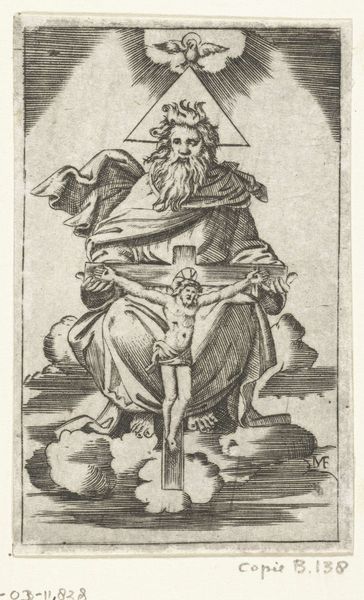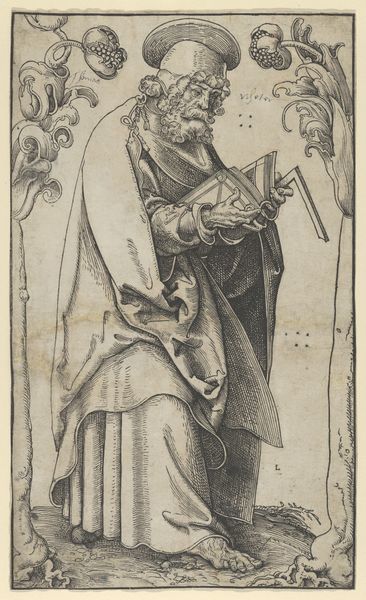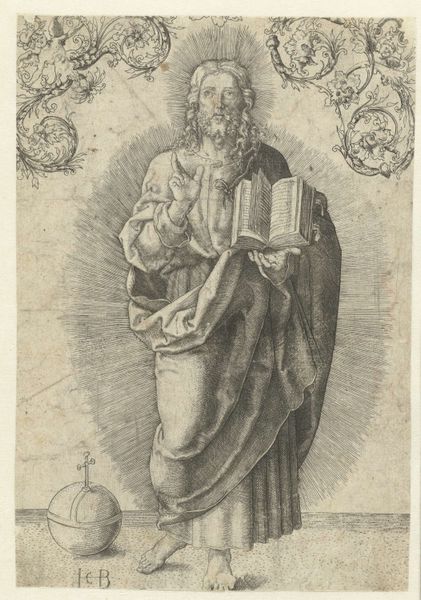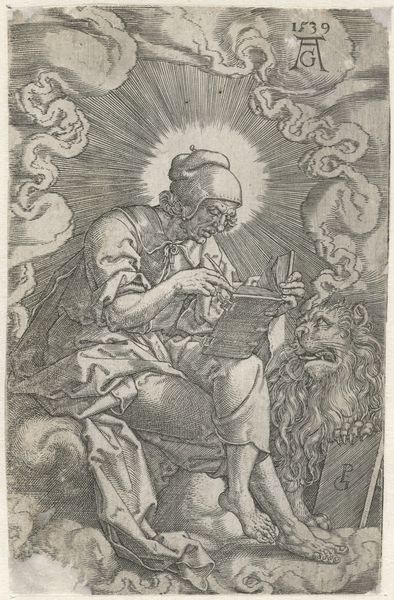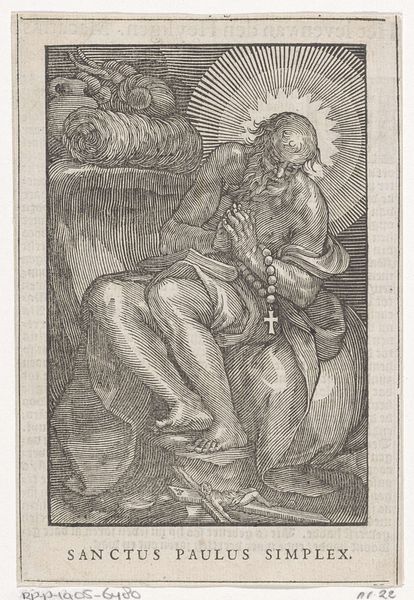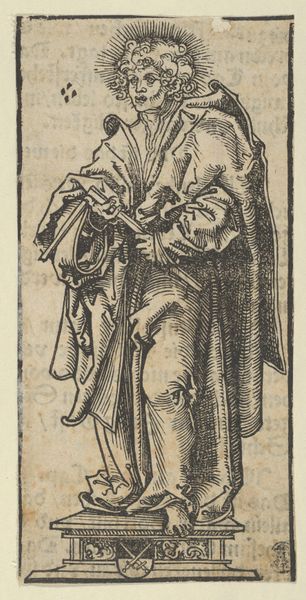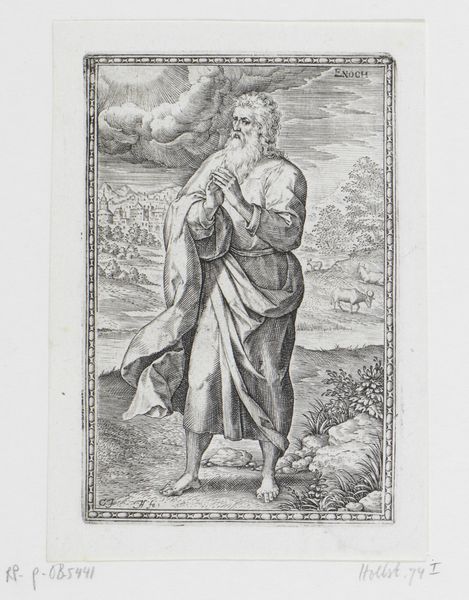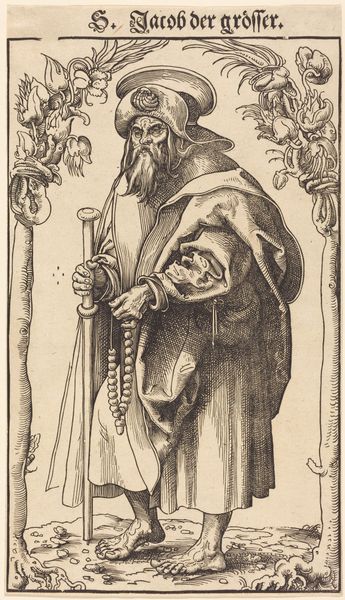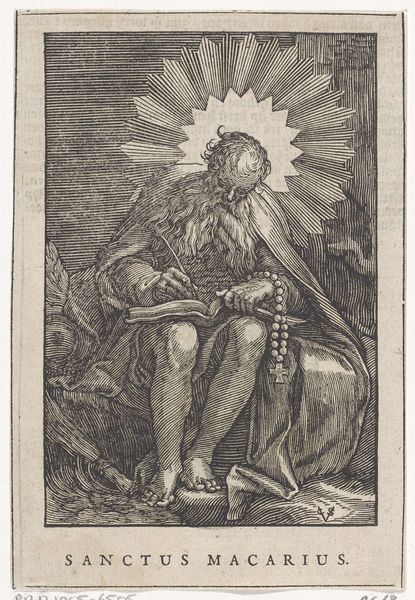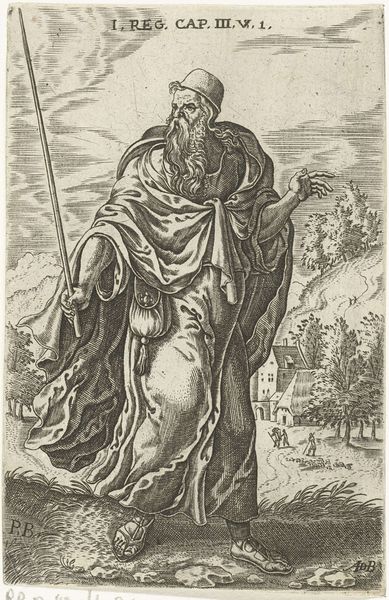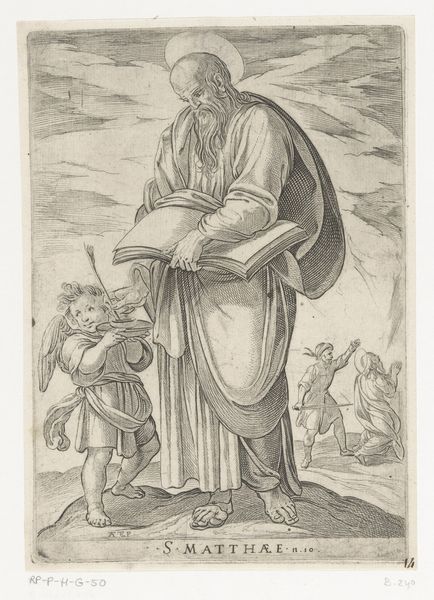
drawing, print, intaglio, engraving
#
portrait
#
drawing
#
allegory
# print
#
intaglio
#
figuration
#
line
#
history-painting
#
italian-renaissance
#
engraving
Dimensions: 3 5/16 x 2 in. (8.4 x 5.1 cm)
Copyright: Public Domain
Editor: This is "The Holy Trinity," an engraving by Marcantonio Raimondi, created sometime between 1495 and 1532. I find the linear details so striking, especially how they create a sense of depth. How do you interpret this work, considering its historical and religious context? Curator: Considering Raimondi's historical moment, we have to ask ourselves, what does it mean to depict the Holy Trinity visually, and what power dynamics are at play? The engraving visualizes a hierarchy: God the Father enthroned, holding Christ on the cross, and the Holy Spirit as a dove above, enclosed within a triangle symbolizing the divine. Editor: That's fascinating. So, how would an activist lens help us to unpack that hierarchy further? Curator: The image reflects and reinforces a patriarchal structure prevalent in both the Church and Renaissance society. God the Father, in his position, becomes the ultimate authority, a notion used to justify earthly power structures. Where does the feminine divine fit in here, or doesn't it? The suffering of Christ becomes a tool, as well, an icon of submission and sacrifice valorized above all else. Editor: I hadn't thought of the visual representation in those terms, but it makes a lot of sense. Are there any ways viewers at the time might have questioned this representation? Curator: The proliferation of prints like these allowed for wider distribution of ideas, certainly, but we must also remember that access was largely limited along lines of class and gender. And even when this was distributed, what frameworks did people use to accept or reject those images and beliefs? What do *you* think about it, coming to it as a 21st century student? Editor: It makes me question the implicit biases embedded in even the most revered artworks and prompts me to seek out diverse representations that challenge established narratives. Thanks for making me look deeper into that. Curator: That is the essence of this process. By examining these works critically, we can better understand and challenge the systems of power that shape our world today.
Comments
No comments
Be the first to comment and join the conversation on the ultimate creative platform.

